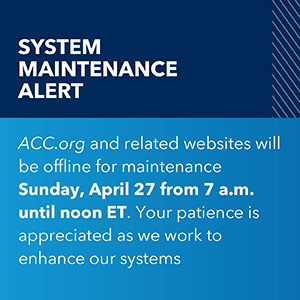Exercise-Induced Troponin and Clinical Outcomes
Study Questions:
Are post-exercise troponin I (TnI) levels associated with clinical outcomes in long-distance walkers?
Methods:
The authors measured TnI concentrations in 725 Dutch participants (62% male, mean age 61 years) of the Nijmegen Four Days Marches, both at baseline and 10 minutes after finishing the first day of walking. The primary endpoint was a composite of all-cause mortality and major adverse cardiovascular events (MACE). Survival status was derived from the Dutch population register (median follow-up of 52 months [range 28-100]).
Results:
Participants walked 8.3 [7.3–9.3] hours at 68 ± 10% of their predicted maximum heart rate. Baseline TnI was detectable (≥0.006 μg/L) in 233 (33%) participants, with nine participants (1%) having a value >0.040 μg/L. TnI concentrations increased after exercise, with 418 participants (58%) having detectable concentrations, and 63 participants (9%) with values >0.040 μg/L. Participants who were older, men, and those with a history of cardiovascular disease (CVD), who walked at a higher intensity, and lost weight were more likely to have a post-exercise TnI level of >0.040 μg/L. During follow-up, 62 participants reached the primary endpoint: 29 died and 33 had MACE. Post-exercise TnI >0.040 μg/L was associated with a 2.5-fold increase in risk of death and MACE. A step-wise increase in risk was noted with rising post-exercise TnI levels.
Conclusions:
Exercise-induced TnI rises in older long-distance walkers was associated with worse cardiovascular outcomes.
Perspective:
This study, using conventional TnI assays, reveals that amongst older walkers, detectable baseline and post-exercise TnI levels are common and associated with worse outcomes independently of a known history of CVD. It is important to highlight that this association does not implicate exercise as a contributing factor to cardiovascular outcomes. Instead, the data reveal that exercising in the nonmedical setting – as in the medical setting – can uncover subclinical CVD. Otherwise, while an interesting study, it provides no clear clinical implications, but highlights several questions, the most important one being: Is there a subset of people in whom higher-intensity exercise would be detrimental?
Clinical Topics: Diabetes and Cardiometabolic Disease, Prevention, Exercise
Keywords: Biomarkers, Cardiovascular Diseases, Exercise, Heart Rate, Outcome Assessment, Health Care, Primary Prevention, Risk, Troponin I, Walkers, Walking, Weight Loss

